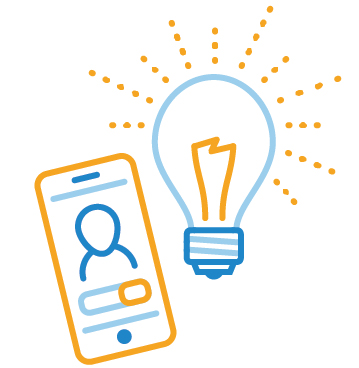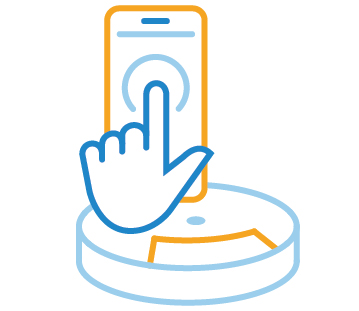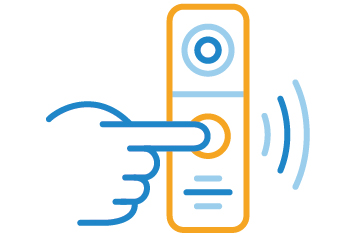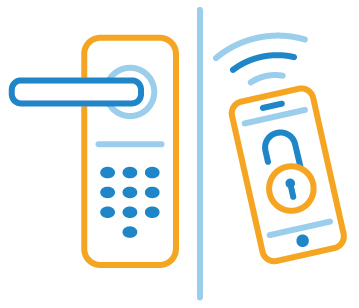What are the Seven Principles?
- Encourage contact between students and faculty
- Develop reciprocity and cooperation among students
- Encourage active learning
- Give prompt feedback
- Emphasize time on task
- Communicate high expectations
- Respect diverse talents and ways of learning
What are the Seven Principles?
How can undergraduate education be improved? In 1987, Arthur W. Chickering and Zelda F. Gamson answered this question when they wrote “Seven Principles for Good Practice in Undergraduate Education.” They defined what good education means at the undergraduate level. The seven principles are based upon research on good teaching and learning in the college setting.
These principles have been intended as a guideline for faculty members, students, and administrators to follow to improve teaching and learning. Research for over 50 years on practical experience of students and teachers supports these principles. When all principles are practiced, there are six other forces in education that surface: activity, expectations, cooperation, interaction, diversity, and responsibility. Good practices work for professional programs as well as the liberal arts. They also work for a variety of students: Hispanic, Asian, young, old, rich, poor.
Teachers and students have the most responsibility for improving undergraduate education. However, improvements will need to be made by college and university leaders, and state and federal officials. It is a joint venture among all that is possible. When this does occur, faculty and administrators think of themselves as educators that have a a shared goal. Resources become available for students, faculty, and administrators to work together.
The goal of the seven principles is to prepare the student to deal with the real world.
Principle 1: Encourage contact between students and faculty.
Building rapport with students is very important. The contact between students and teachers are vital to the students’ success. One of the main reasons students leave school is the feeling of isolation that they experience. The concern shown will help students get through difficult times and keep working. Faculty have many avenues to follow to open up the lines of communication.
For the regular classroom:
- Invite students to visit outside of class.
- Know your students by name.
- Help students with problems in their extracurricular activities.
- Personalize feedback on student assignments.
- Attend student events.
- Advise students regarding academic courses and career opportunities.
- Seek out students you feel are having a problem with the course or are frequently absent.
- Encourage students to present their views and participate in class discussions.
- Have regular office hours.
- Help students to work with other faculty. Let them know of options, research, etc. of other faculty.
- Share personal experiences and values.
- Use the one-minute paper at the end of class to get feedback on what the student is learning and how well they are learning it.
- Talk to students on a personal level and learn about their educational and career goals.
For distance and online courses:
- Try computer conferencing.
- Use list serves.
- Clearly communicate your email response policy.
- Encourage e-mail correspondence and discussion forum use, especially beneficial for those that are shy or are from different cultures because it allows them a different avenue of communication that might be more comfortable.
- “Chat time” online with faculty (at various times, scheduled weekly).
- Use pictures of faculty/students.
- Visit the distance sites, if possible.
- Have an on-site support person.
- Maintain eye contact with camera and local students.
- Arrange for group work at a distance site.
Principle in action:
- A York College (PA) professor has incorporated an invitation in the syllabus to encourage contact during office hours: “You are encouraged to stop in during office hours to talk about any problems or suggestions you may have concerning the course; about careers (especially graduate school or the benefits of majoring or minoring in (Insert your course here); or just about things in general. If you want to talk to me and find the schedule hours to be inconvenient, feel free to schedule an appointment.”
- Faculty at St. Norbert College, Wisconsin, use electronic mail discussion groups. Many instructors find that the students are more willing to participate in a written discussion than to speak up in class. The instructor monitors the discussions and participates along with the students, adding personal perspectives and ideas to those of the students.
- The Residential College of Winona State University has implemented a “living-and-learn” environment to encourage student and faculty interaction. It is located 12 blocks from the main campus and houses 400 students in large, mostly single rooms. Academic activities at the Residential College include freshman seminars, sophomore common reading seminars, and an in-resident program with notable scholars or artists participating with students in a variety of experiences. Residential College faculty are located there and hold office hours. The interaction between students and faculty are enhanced because of the increased interaction.
Technology, like e-mail, computer conferencing, and the World Wide Web/Internet, now gives more opportunities for students and faculty to converse. It is efficient, convenient, and protected. It allows more privacy so that students are able to discuss more openly without fear that other students are going to hear. E-mail also gives student more time to think about what they want to say. With these new alternatives to face-to-face communication, interaction from more students should increase within the classroom.
Resources:
- Building awareness and diversity into student life: Pomona College. (1991). Liberal Education, 77 (1), 38-40.
- First year experience creates a community of learners: Augsburg College. (1989). Liberal Education, 75 (5), 28-29.
- Furlong, D. (1994). Using electronic mail to improve instruction. The Teaching Professor, 8 (6), 7.
- O’Neill, K.L. and Todd-Mancillas, W.R. (1992). An investigation into the types of turning points affecting relational change in student-faculty interactions. Innovative Higher Education, 16, (4), 227-290.
- Wilson, R.C., Gaff, J.G., Dienst, L.W., and Bavry, J.L. (1975). College Professors and Their Impact on Students. New York, NY: John Wiley.
Principle 2: Develop reciprocity and cooperation among students.
When students are encouraged to work as a team, more learning takes place. Characteristics of good learning are collaborative and social, not competitive and isolated. Working together improves thinking and understanding.
For the regular classroom:
- Use cooperative learning groups
- Have students participate in activities that encourage them to get to know one another.
- Encourage students to join at least one organization on campus.
- Assign group projects and presentations
- Utilize peer tutoring.
- Encourage students to participate in groups when preparing for exams and working on assignments.
- Distribute performance criteria to students is that each person’s grade is independent of those achieved by others.
- Encourage students from different races and cultures to share their viewpoints on topics shared in class.
For distance and online courses:
- Use chat sites and discussion forums for student-to-student communication.
- Set up teams to interact through e-mail or phone bridges with enough people at each site.
- Encourage students to respond to their peers’ work by posting it on the internet.
- Have a question and answer time online.
- Use teleconferencing for idea sharing.
- Encourage online discussion groups that require interaction.
- Work on group projects through phone and e-mail.
- Team-teach courses.
- Include an “ice-breaker” activity to allow students to share their interest and to learn about others.
Principle in action:
- Students in communication courses at Miami University develop a group “code of conduct” to help facilitate cooperative learning. A sample code is given out as a model. The sample code includes: respect each other, criticize ideas instead of people, listen actively, seek to understand before being understood, contribute to group discussion, keep an open mind, share responsibility, and attend all meetings. Students are encouraged to customize the code to address other shared concerns the group may have. Students refer to the code after each class or group session to assess their performance and identify areas for improvement.
- At Naugatuck Valley Community-Technical College, students are tested both individually and collaboratively. Students are given a test date but are not told in which fashion they will be tested. Group tests are highly structured and a unanimous decision must be reached for the answer. The collaborative testing method helps students experience a sensitivity for diversity and others’ point of view; develop and refine skills in persuasion, listening, and reading; and share responsibility and accountability. This method also reduces test anxiety among students.
- In a first-year composition class at University of Minnesota students videotape themselves discussing apprehensions before taking the course, their feelings when they received their papers back, and what they learned from the class. Next quarter, the video is shown to new students in the course to show that the feelings they are experiencing are shared by others and helps motivate them to succeed.
Cooperative learning has several benefits. Students care more about their learning because of the interdependent nature of the process. Retention is higher because there is a social and intellectual aspect on the content material. Students also find the method more enjoyable because there is no competition placed upon them. Cooperation, not competition, is more effective in promoting student learning.
Resources:
- Cassini, C. (1994). Collaborative testing, grading. The Teaching Professor, 8 (4), 5.
- Grading student projects: A project in itself. (1994). Adapted from For Your Consideration, 3 (3), by The Teaching Professor, 8 (2), 3-4.
- Johnson, D.W. and Johnson, R.T. (1985). Cooperative Learning: Warm Ups, Grouping Strategies and Group Activities. Edina, MN: Interaction Book Co.
- McKinney, K. and Graham-Buxton, M. (1993). The use of collaborative learning groups in the large class: Is it possible? Teaching Sociology, 21, 403-408.
- Prescott, S. (1992). Cooperation and motivation. Cooperative Learning and College Teaching, 3 (1).
- *Special note: The National Center on Post secondary Teaching, Learning, and Assessment has developed a source book on collaborative learning. Contact: NCTLA, Penn State University, 403 S. Allen St. Suite 104, University Park, PA 16801.
Principle 3: Encourage active learning.
Learning is an active process. Students are not able to learn much by only sitting in classes listening to teachers, memorizing pre-packaged assignments, and churning out answers. They must be able to talk about what they are learning, write about it, relate it to past experiences, and apply it to their daily lives. Students need to make learning a part of themselves.
For the regular classroom:
- Ask students to relate what they are learning to something in real life.
- Use journaling.
- Give students concrete, real-life situations to analyze.
- Encourage students to suggest new reading, projects, or course activities.
- Ask students to present their work to the class.
- Use of simulation software to run “what-if” scenarios allows students to manipulate variables and circumstances.
- Practice role modeling and use web-based case studies to practice new thinking skills.
- Encourage students to challenge your ideas, the ideas of other students, or those ideas presented in readings or other course materials in a respectful matter.
- Set up problem solving activities in small groups and have each group discuss their solutions with the class.
For distance and online courses:
- Allow flexibility in choosing material so that it is more meaningful to the learner (e.g. students choose their own topic, project format, etc.).
- Have an interactive web page.
- Debate on-line.
- Present students work for other students to review.
- Talk about what students are learning by creating a learning group through e-mail, telephone, chat room, or conferencing.
- Use e-mail for group problem solving.
Principle in action:
- At Iowa State University, history students interview prominent historical individuals during a press conference. After the press conferences, students work in groups identifying the main ideas and creating headlines and news articles that highlight those ideas.
- Structured journal writing is a major part of several classes at Lesley College. Each journal entry has two parts: the first paragraph emphasizes points for recall and retention; the second part emphasizes application of the content to the student’s life experience and observation.
- An education professor at the University of Wisconsin-LaCrosse has created a hypothetical school system, complete with administration, teachers, pupils, and families. The goal is to help the students learn the legal aspects of special education. During the semester, the students take on all roles as they participate in legal cases involving students with disabilities. Students gain an understanding of the law as it applies to special education and students with disabilities, and they develop a human understanding of the human side of the cases.
Promoting active learning in higher education is a struggle because of the learning background that many students come to classes with. This is due to the fact that the norm in our nation’s secondary schools has been to promote passive learning. A large amount of information needs to be covered with not enough time, so teachers resort to lecture in order to economize their time to cover as much material as possible. Students progress from topic to topic with no real understanding of the content and how it relates to their life. Effective learning is active learning. The concept of active learning has been applied to curriculum design, internship programs, community service, laboratory science instruction, musical and speech performance, seminar classes, undergraduate research, peer teaching, and computer-assisted learning. The common thread between all these events is to stimulate students to think about how they as well as what they are learning and to take more responsibility for their own education.
Resources:
- Gabennesch, H. (1992). Creating quality class discussion. The Teaching Professor, 6 (9), 5.
- Hands on experience in course’s focus: Temple University. (1989). Liberal Education, 75 (4), 33-34.
- Harrison-Pepper, S. (1991). Dramas of persuasion: Utilizing performance in the classroom. Journal of Excellence in College Teaching, 2.
- Interdisciplinary approach to technology. (1998). Liberal Education, 74, (2), 23-24.
- Nalcolmson, P. and Myers, R. (1993). Debates: Techniques for improving student thinking. The Teaching Professor, 7 (3) 6.
Principle 4: Give prompt feedback.
By knowing what you know and do not know gives a focus to learning. In order for students to benefit from courses, they need appropriate feedback on their performance. When starting out, students need help in evaluating their current knowledge and capabilities. Within the classroom, students need frequent opportunities to perform and receive suggestions for improvement. Throughout their time in college and especially at the end of their college career, students need chances to reflect on what they have learned, what they still need to know, and how to assess themselves.
For the regular classroom:
- Follow-up presentations with a five minute period for students to write down what they have learned in class.
- Provide informative comments that show the students’ errors and give suggestions on how they can improve.
- Discuss the results of class assignments and exams with the class and individual students.
- Vary assessment techniques (tests, papers, journaling, quizzes).
- Offer on-line testing, software simulations, and web-based programs that provide instantaneous feedback.
- Have question and answer sessions.
- Use audio and/or video recordings to assess performances.
- Return grades for assignments, projects, and tests within one week.
For distance and online courses:
- E-mail gives instant feedback instead of waiting for the next lesson.
- Use on-line testing, software simulations, and web-based programs that provide instantaneous feedback.
- Monitor bulletin boards regularly and give specific information feedback to students.
- Use pre-class and post-class assessments.
- Schedule a chat group where you, the instructor are present. Use it as a question and answer session when appropriate.
- Send acknowledgment e-mails when you receive a students work.
- Post answer keys after receiving assignment from all students.
- Use of hyperlinks within text to provide feedback to questions raised within the text.
Principle in action:
- At the University of Scranton, a management professor, used computer scored multiple choice tests and quizzes which allowed the professor to have the tests graded during the break that followed the test or quiz. The students immediately received their results and were able to discuss the exam in detail. Students were able to understand the material better through the class discussion that occurred after the test.
- Hollins College students taking the Critical Thinking course submit two copies of their papers. The second paper is critiqued by another student.
- Faculty at Winona State University in the Communication Studies Department have to evaluate as many as 30 speeches a day. They developed a system of codes for the most common comments on speeches. These codes were programmed into a computer program and instructors were able to listen to the speech and type in the codes for the appropriate comments. This gave extra time to make specific comments on the individual speech and also gave students complete and prompt feedback on the entire speech.
The importance of feedback is so obvious that it is often taken for granted during the teaching and learning process. It is a simple yet powerful tool to aid in the learning process. Feedback is any means to inform a learner of their accomplishments and areas needing improvement. There are several different forms that feedback can take. They are oral, written, computer displayed, and from any of the interactions that occur in group learning. What is important is that the learner is informed and can associate the feedback with a specific response.
Resources:
- Brinko, K.T. (1993). The practice of giving feedback to improve teaching. Journal of Higher Education, 64 (5), 574-593.
- Dohrer, G. (1991). Do teachers comments on students’ papers help? College Teaching, 39 (2), 48-54.
- Enhancing instructor-class communication. (1994). The Teaching Professor, 8 (3), 3-4.
- More on student self-assessment. (1992). The Teaching Professor, 6 (10), 7.
- Svinicki, M.D. Four R’s of effective evaluation. (1993). Reprinted from The Center for Teaching Effectiveness Newsletter at the University of Texas as Austin, in The Teaching Professor, 7 (9), 3-4.
Principle 5: Emphasize time on task.
Learning needs time and energy. Efficient time-management skills are critical for students. By allowing realistic amounts of time, effective learning for students and effective teaching for faculty are able to occur. The way the institution defines time expectations for students, faculty, administrators, and other staff, can create the basis for high performance from everyone.
For the regular classroom:
- Expect students to complete their assignments promptly.
- Clearly communicate to your students the minimum amount of time they should spend preparing for class and working on assignments.
- Help students set challenging goals for their own learning.
- Have realistic expectations (don’t expect 10 papers in 10 weeks).
- Encourage students to prepare in advance for oral presentations.
- Explain to your students the consequences of non-attendance.
- Meet with students who fall behind to discuss their study habits, schedules, and other commitments.
- Be careful that time on task is real learning, not busy work.
- Do not use technology for technology’s sake. It must be relevant and useful to the topic.
- Have progressive deadlines for projects and assignments.
- Teach time management.
- Discussion topics from class posted in a discussion group on the web .
For distance and online courses:
- Understand that there will be problems with the distance and technology along the way.
- Identify key concepts and how those will be taught. Given the amount of time, decide what realistically can be covered.
- Each distance class should involve some kind of achievement expectation that is laid out at the beginning of the course. Assign some content for out of class time.
- Give up the illusion of doing it all as you might in a regular classroom.
- Vary the types of interaction. In creating an interactive environment, it can be overwhelming to the students and teacher if the types of interaction required are too time consuming.
- Consider both in and out of class time.
- Make sure you know what your goals are and that the learners understand them as well.
- Have regular discussions that require participation.
Principle in action:
- At Fort Lewis College in Colorado they have an “Innovative Month”. Students are offered a series of five week summer domestic and foreign travel experiences that help them relate what they learned in the classroom to real life. The groups are limited to eight to fifteen students pre faculty member. Examples of Innovative programs include, “Management in Action”, “Native American Schools”, and “Music and Theater in England”.
- At Lower Columbia College, the Integrative Studies Program is a block of 15 to 18 credit hours, organized around a theme. Students enroll in “traditional” courses, ut must enroll in the full block. This lets the faculty reorganize the day from the traditional fifty minute classes to include whatever schedule of lectures, seminars, conferences, and discussion groups needed to achieve learning objectives for that week.
- Wake Forest University teaches time management and study skills in their Learning Assistance Program and in the Learning to Learn class. Through a counseling/teaching model in the Learning Assistance Program, students are individually encouraged to learn and develop strategies to improve their academic performance. In the Learning to Learn Course, first and second year students study learning theory with emphasis on demonstrating how good time management and appropriate study skills positively affect outcome.
An easy assumption to make would be that students would be more successful if they spent more time studying. It makes sense but it over simplifies the principle of time on task. Student achievement is not simply a matter of the amount of time spent working on a task. Even though learning and development require time, it is an error to disregard how much time is available and how well the time is spent. Time on task is more complicated than one might assume.
Resources:
- Britton, B.K., and Tesser, A. (1991). Effects of time management practices on college grades. Journal of Educational Psychology, 83 (3), 405-410.
- Earth-sea-sky course combines art, science: Mississippi State University. (1988). Liberal Education, 74 (2), 29-30.
- Geiger, K. (1994). Rethinking school time: New, Better, and different…as well as more. The Washington Post, June 12, 1994. p. C3.
- Ludewig, L.M. (1992). The ten commandments for effective study skills. The Teaching Professor, 5 (10), 3.
- Terenzini, P.T., and Pascarella, E.T. (1994). Living with myths: Undergraduate education in America. Change, pp. 28-32.
Principle 6: Communicate high expectations.
Expect more and you will get it. The poorly prepared, those unwilling to exert themselves, and the bright and motivated all need high expectations. Expecting students to perform well becomes a self-fulfilling prophecy when teachers and institutions hold high standards and make extra efforts.
For the regular classroom:
- Give a detailed syllabus with assignments, due dates, and a grading rubric.
- Encourage students to excel at the work they do.
- Give students positive reinforcement for doing outstanding work.
- Encourage students to work hard in class.
- Tell students that everyone works at different levels and they should strive to put forth their best effort, regardless of what level it is.
- Help students set challenging goals for their own learning.
- Publicly acknowledge excellent student performance.
- Revise courses when needed so students remain challenged.
- Work individually with students who are struggling to encourage them to stay motivated.
- Encourage students to do their best instead of focusing on grades.
For distance and online courses:
- Give a detailed syllabus with assignments, due dates, and a grading rubric.
- Call attention to excellent work in bulletin board postings or class list serves.
- Show examples of your expectations with previous students’ work.
- Publish student work.
- Provide corrective feedback. State what you did and did not like.
- Be a role model to students. Model the behavior and expectations that you expect from students.
- Expect students to participate.
- Try to make assignments interesting and relevant to create interest.
- Ask students to comment on what they are doing.
- Suggest extra resources that support key points.
Principle in action:
- At Bellevue University (Nebraska), students in the Introductory Psychology course are given a guide for answering essay questions on their syllabus. The suggestions are designed to provide direction to answering a broadly stated essay question. Three exams are given throughout the course. The list of suggestions as well as the essay question are included on the first two exams. On the final exam, only the essay question is given. Students are allowed to practice their writing skills until the assistance is no longer needed.
- In order to understand how students at SUNY-Plattsburgh learn and develop and how the school can help them to do so, students are required to take the College Outcomes Measures Project examination of the American College Testing Program (ACT COMP) as freshmen and again at the end of their sophomore year.
- Clayton State College requires students to exhibit seven different writing styles. Several levels of proficiency are present for each of the seven criteria. All students must pass writing assessments on four different occasions.
Although it is often only discussed at the instructional level, high expectations also includes the students’ performance and behavior inside and outside the classroom. College and universities expect students to meet their high expectations for performance in the classroom, but also expect a personal and professional commitment to values and ethics. They include the discipline to set goals and stick with them, an awareness and appreciation of the diversity of society, and a philosophy of service to others.
Resources:
- An American Imperative: Higher Expectations for Higher Education. An open letter to those concerned about the American future. Report on the Wingspread group in Higher education. (1993).
- Defining what students need to know: Clayton State. (1988). Liberal Education, 74 (3), 29-30.
- Gabelnick, F., MacGregor, J., Matthews, R.S., and Smith, B.L. (1990). Learning communities: Creative connections among students, faculty, and disciplines. New Directions for Teaching and Learning, (4), San Francisco, CA: Jossey-Bass.
- Nuhfer, E.B. (1993). Bottom line disclosure and assessment. The Teaching Professor, 7 (7), 8.
- Williams, J.H. (1993). Clarifying grade expectations. The Teaching Professor, 7 (7), 1.
Principle 7: Respect diverse talents and ways of learning.
There are many different ways to learn and no two people learn the same way. Students bring different talents and learning styles to the classroom. Students that excel in the seminar room may be all thumbs in the lab or art studio and vice versa. Students need the opportunity to show their talents and learn in ways that work for them. Then, they can be guided into new ways of learning that are not as easy for them.
For the regular classroom:
- Use Web technologies to allow students to pick and choose learning experiences that fits the way they learn.
- Encourage students to speak up when they do not understand.
- Use diverse teaching activities and techniques to address a broad range of students.
- Select readings and design activities related to the background of students.
- Provide extra material or activities for students who lack essential background knowledge or skills.
- Integrate new knowledge about women, minorities, and other under-represented populations into your courses.
- Use learning contracts and other activities to provide students with learning alternatives for your courses.
- Encourage students from different races and cultures to share their viewpoints on topic discussed in class.
- Use collaborative teaching and learning techniques and pair students so they compliment each others abilities.
- Give students a problem to solve that has multiple solutions. Guide them with clues and examples.
- Consider field trips.
- Be familiar with Howard Gardner’s research on multiple intelligences.
For distance and online courses:
- Encourage students to express diverse points of view in discussions.
- Create learning activities filled with real-life examples and diverse perspectives.
- Provide Saturday lab experiences by contracting with local high schools or community colleges.
- Some CD-Roms are available that offer a simulated lab.
- Balance classroom activities for all styles (some books, some hands on, some visual).
- Explain theory from a practical approach first then add the structural approach.
Principle in Action:
- Realizing that students can interpret exam questions in different ways, students at Georgia State University in the nursing program are given the chance to modify multiple choice exam questions that they find confusing. This student input lessens test anxiety and gives the student an opportunity to demonstrate what they know.
- Western Washington University’s Fairhaven College has a cluster college with an interdisciplinary curriculum and an emphasis is place on student-centered approaches to teaching and learning.
- At Kalamazoo College, the K Plan gives students an on and off campus study that allows them to spend a significant amount of their time in college on career-development internships, foreign study, and individualized projects.
The meaning of diversity is very clear from effective institutions. They embrace diversity and systematically foster it. This respect for diversity should play a central part in university decisions, be apparent in the services and resources available to students and resources available to students, be a feature of every academic program, and practiced in every classroom.
Resources:
- Hill, P.J. (1991). Multiculturalism: The crucial philosophical and organizational issues. Change, 38-47.
- Jacobs, L.C., and Chase, C.I. (1992). Developing and Using Tests Effectively: A Guide for Faculty. San Francisco, CA: Jossey-Bass.
- Kolb, D. (1981). Learning styles and disciplinary differences. In The Modern American College, edited by A.W. Chickering and Associates. San Francisco, CA: Jossey-Bass.
- Lynch, J.M., and Bishop-Clark, C. (1993). Traditional and nontraditional student attitudes toward the mixed age classroom. Innovative Higher Education. Winter, 109-121.
- National Institute of Education. (1984). Involvement in Learning: Realizing the Potential of American Higher Education. Final report of the study group on the conditions of excellence in American higher education. Washington, DC: U.S. Department of Education News.
References
- Benson, David, Lu Mattson and Les Adler (1995). Prompt Feedback. In Susan Rickey Hatfield (Ed.), The Seven Principles In Action (55-66). Bolton, MA: Anker Publishing Company, Inc.
- Brown, David G. and Curtis W. Ellison (1995). What is Active Learning?. In Susan Rickey Hatfield (Ed.), The Seven Principles In Action (39-53). Bolton, MA: Anker Publishing Company, Inc.
- Bunda, Mary A. (1993). The Seven Principles for Good Practice in Undergraduate Education. Instructional Exchange 4 (1-6), 1-4.
- Chickering, Arthur W. (1991). Institutionalizing the Seven Principle and the Faculty and Institutional Inventories. New Directions For Teaching And Learning. Jossey Bass Inc. 47.
- Chickering, Arthur W. and Ehrmann, Stephen C. (2000). Implementing the Seven Principles: Technology as Lever. [Online]. Available: http://www.hcc.hawaii.Edu/intranet/commi…/FacDevCom/guidebk/teachtip/7princip/htm. [2001, January 10}.
- Chickering, Arthur W. and Gamson, Zelda F. (1987). Seven Principles for Good Teaching in Undergraduate Education. AAHE Bulletin 39, 3-7.
- Chizmar, John F. and Walbert, Mark S. (1999) Web-Based Learning Environments. The Journal of Economic Education 30 (3), 248.
- Codde, Joseph (2000). Applying the Seven Principles for Good Practice in Undergraduate Education. {Online}. Available: http://www.msu.edu/user/coddejos/seven.htm. [2001, January 10].
- Cookman, Claude (1998). A Computer-Based Graphics Course and Student’s Cognitive Skills. Journalism and Mass Communication. 53 (3), 37-49.
- Cross, K. Patricia. 1997. The Freshman Year: Working Out the Puzzle of a College Education. Paper presented at the Sixteenth Annual Conference on The Freshman Year Experience, Columbia, SC, February 22. (Eric Document Reproduction Services No. ED 410 773)
- Graham, Charles R., Cagiltay, Kursat, Craner, Joni, and Lim, Byung-Ro (2000). Using the Seven Principles to Evaluate Online Courses. Paper presented at Distance Learning 2000: Proceedings of the Annual Conference on Distance Teaching and Learning, Madison, Wisconsin. (Eric Document Reproduction Services No. ED 456 235)
- Hatfield, Tim and Susan Rickey Hatfield (1995). Cooperative Learning Communities. In Susan Rickey Hatfield (Ed.), The Seven Principles In Action (23-38). Bolton, MA: Anker Publishing Company, Inc.
- Lidman, Russell M., Barbara Leigh Smith, and Thomas L. Purce (1995). Good Practice Respects Diverse Talents And Ways Of Learning. In Susan Rickey Hatfield (Ed.), The Seven Principles In Action (95-106). Bolton, MA: Anker Publishing Company, Inc.
- Millis, B. J. (1991). Fulfilling the promise of the “seven principles” through cooperative learning: An action agenda for the University classroom. Journal on Excellence in College Teaching. 2, 139-144.
- Revak, Marie (2000). If Technology is the Hammer, Where’s the Nail?. Cooperation and Collaboration in College Teaching 10 (1), 21-23
- Scott, Robert A. and Dorothy Echols Tobe (1995). Effective Undergraduate Education Communicates High Expectations. In Susan Rickey Hatfield (Ed.), The Seven Principles In Action (79-94). Bolton, MA: Anker Publishing Company, Inc.
- Sturnick, Judith A. and Keith J. Conners (1995). Good Practice Encourages Student-Faculty Contact. In Susan Rickey Hatfield (Ed.), The Seven Principles In Action (9-21). Bolton, MA: Anker Publishing Company, Inc.
- Vorkink, Stuart (1995). Time On Task. In Susan Rickey Hatfield (Ed.), The Seven Principles In Action (67-78). Bolton, MA: Anker Publishing Company, Inc.
Walker Center for Teaching and Learning
433 Library | Dept 4354 | 615 McCallie Ave | Chattanooga, TN 37403 | p (423)425-4188 | Email Us!
















